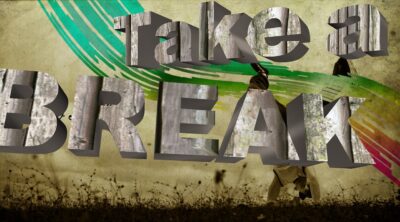 Writers are pretty much a solitary, dedicated lot, listening to their characters and investing countless hours telling their story. Amidst that fierce determination is the stark realization that writers cannot work non-stop—it may even prove to be counter-productive. So, when is the best time to take a break, and should those breaks be totally unrelated to the craft of writing? Let’s explore some ideas about taking breaks and how they can help a writer become even more productive when they return.
Writers are pretty much a solitary, dedicated lot, listening to their characters and investing countless hours telling their story. Amidst that fierce determination is the stark realization that writers cannot work non-stop—it may even prove to be counter-productive. So, when is the best time to take a break, and should those breaks be totally unrelated to the craft of writing? Let’s explore some ideas about taking breaks and how they can help a writer become even more productive when they return.
A Stubborn Plot
Step back, take a breath, and never berate yourself for getting stuck. It’s part of the process. Doing something completely unrelated sometimes helps. A change of scenery, location, or activity goes a long way in sorting things out. You don’t have to take an extended vacation; moving to another room, taking a walk, or digging in the garden might be enough to give your brain the rest and diversion it needs.
Visit the Scene
You might be lucky enough to be writing about a scene that you can actually visit. Let’s say your character finds him/herself on the way to the grocery store. Why? You don’t have a clue, but if you’re fortunate enough to be writing a story that has settings you can actually visit, give it a try. Sometimes virtual visits will do the trick (if they’re possible). If you keep your mind open and don’t go there with the sole purpose of finding a solution, chances are it will come to you in some form or another.
Write Something Else
If you can’t stop yourself from writing, write something else. Set the story aside for a bit and write a blog post. Write something completely unrelated to your current work-in-progress—perhaps a poem or a short story. Write about a family memory. Write a letter to someone. If you must write, you’ll be doing something you love while taking a break from your WIP.
A Done Draft
It’s been recommended that once the initial draft of a story is done, you set it aside for about a week before looking at it, revising it, or editing it. For some writers (yours truly included), that’s really hard to do. So, what do we do in the meantime? Well, take some time to congratulate yourself on getting that first draft completed! Maybe a trip to the office supply store for a hard copy to edit when the time comes (no peeking!) is a good idea. Clean and tidy up your workspace so that when editing begins, you’re ready to go. Sometimes I think about an alternative place to start reading/editing my first draft copy. Instead of facing a blank computer monitor, consider a comfy spot on the patio or whatever relaxing space works for you. A different location helps your brain shift from writer to reader as you begin.
Breaks are a vital, necessary part of a writer’s process. They have the ability to inspire, energize, and solve problems you will encounter as you write. Savor them, enjoy them, and use them well.
